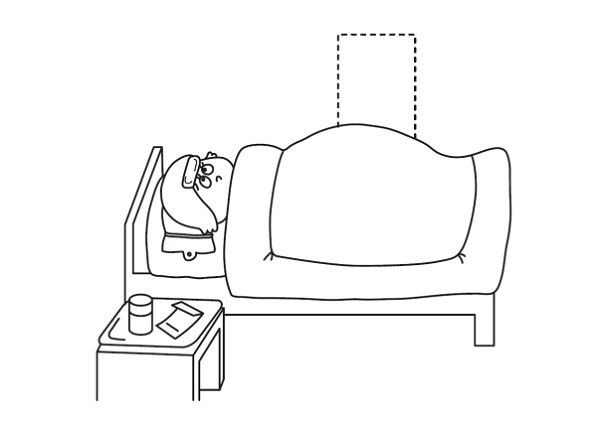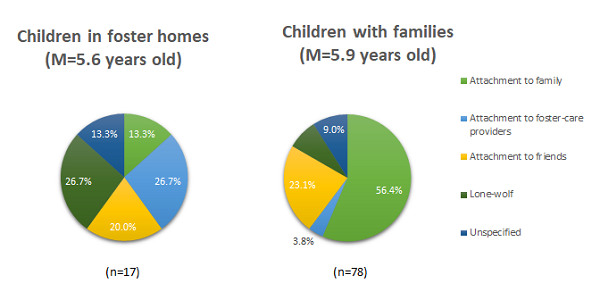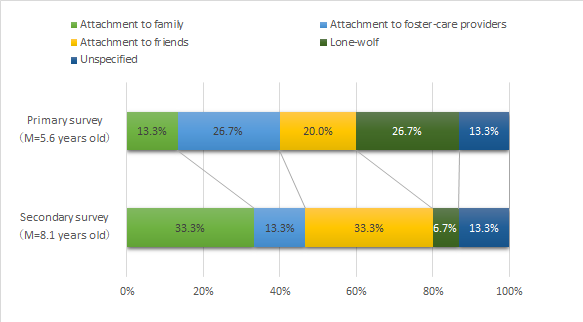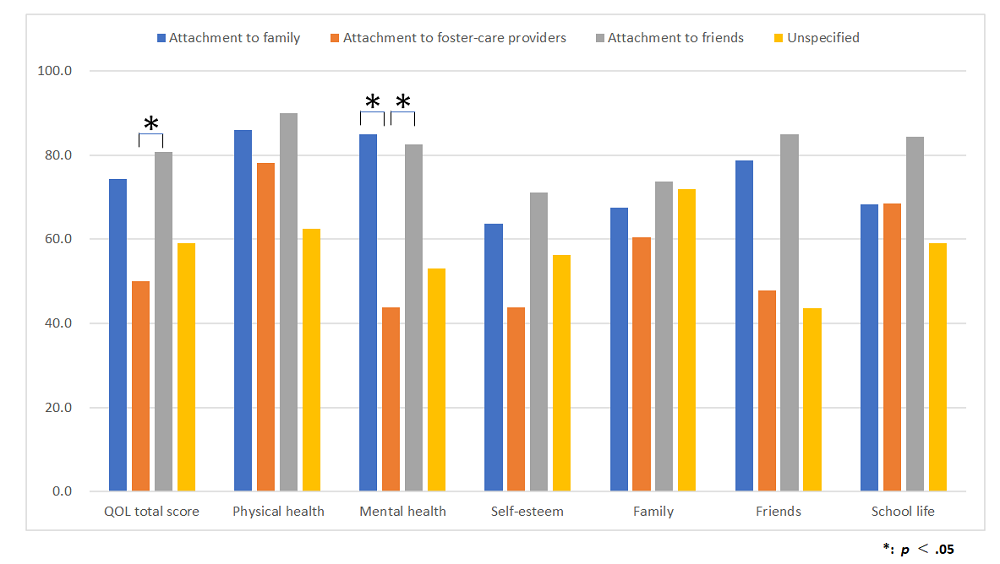* In this article, "foster home" refers to residential care at facilities (children's homes) for children without guardians or for whom the custody of their guardian is found inappropriate. Children taken care of by foster parents are not included.
Introduction
In Japan, about 45,000 children are unable to live with their parents due to difficult family circumstances and therefore need social care assistance. Of them, 30,000 children live in foster homes, infant homes, child psychological treatment facilities, and other child welfare institutions (Ministry of Health, Labour and Welfare, 2019). Their reasons for receiving social childcare vary, including parents' death, illness, and abuse. About 50% of these children live in child welfare institutions for less than four years, and the remaining 50% live there for four years and longer. Children who continue to receive higher education after high school graduation are allowed to stay longer. Under the principles of the Child Welfare Act revised in 2016, the Japanese government is now promoting the alternative care of children to bring them up in family-like settings, such as foster parents and family homes. As a result, the number of children living in child welfare institutions is gradually decreasing.
Nevertheless, considering the growing needs for social childcare and the insufficient number of candidate foster parents, the government still has a long way to go. Further efforts will be needed to provide all children with a stable and secure family environment.
Children who live in child welfare institutions separate from their families will grow up with a lot of individuals, including childcare providers and friends. In the past, there were child welfare institutions with more than 100 foster children. Nowadays, however, most facilities are organized on a smaller scale, and about 70% of institutions have less than 60 foster children (Mizuho Information & Research Institute, Inc., 2019). In addition, the standards for staff allocation are improving. For example, different types of childcare providers such as psychology experts are allocated to foster children. In this way, the number of adults involved in the growth of a single child is gradually increasing.
For children who cannot live with their families and need social childcare, the highest priority is to help them maintain and improve interpersonal relationships with people around them. Most of them are facing various hardships in their childhood and their social network is fragile. It is our society's responsibility to support these children to acquire a solid foundation to survive in society. One of the possible solutions is to help them re-build such a foundation through personal interactions with people in foster homes.
Children growing up in a social network
It is said that every child is uploaded immediately after birth and grows up in a social network, which is composed of multiple individuals. To survive and secure a stable life, the child chooses "significant others" from the network members and allocates psychological functions to them (Takahashi, 2010). It is impossible to assign all roles and functions to one single person, even if the person is an important factor for survival. Therefore, it is safer and more efficient to divide and allocate psychological functions to multiple "significant others" (Shibata & Takahashi, 2015). This approach is similar to the concept of "Alloparenting," a term used in evolutionary biology, meaning individuals other than the actual parents will act in a parental role. Naturally, to survive or avoid critical circumstances, a child is likely to form the first attachment to the person who brings up the child. While the child is growing, the world surrounding him/her is gradually unfolded. Therefore, the child will adjust to "significant others" according to changes in their circumstances. For example, when the child is an infant, he/she will think, "My mother is the one who protects me." However, when the child starts school, he/she may recognize that "XXX is the one who protects me at school." In this way, the child's mental representation is formed, and psychological functions are allocated and updated accordingly through experiences in everyday life. As we often say that children grow up in a society, children's development can be enriched depending on interactions with various "significant others" as well as benefits acquired from such interactions.
Evaluating children's framework of interpersonal relations using the "Picture Affective Relationships Test"
We have been seeking a way to ensure the healthy development of children in social childcare. A survey was conducted to find solutions using the Picture Affective Relationships Test (Takahashi, 1990) to evaluate children's framework of interpersonal relations, i.e., their social network.
The Picture Affective Relationships Test (hereinafter, "PART") is a tool to measure the personal framework of human relationships (mental representation) (Figure 1). In this test, picture cards are used to that indicate six psychological functions: namely, "seeking proximity," "receiving emotional support," "receiving reassurance for behavior and/or being," "receiving encouragement and help," "sharing information and experience," and "giving nurture." We showed the children each card and asked, "In this picture, with whom do you want to be most?"
Based on the test results, the respondents' target of affection who achieved the baseline score or above were then categorized into interpersonal relationship types of "attachment to mother," "attachment to father," "attachment to friends," and so on. In addition, respondents who answered "Anyone," "Alone," or "I don't know" to more than half of the picture cards were categorized as the "lone-wolf" type.
According to prior studies (e.g., Shibata & Takahashi, 2015; Takahashi, 2010), the following facts have been confirmed. First, even children in their early childhood and elementary school age have multiple "significant others" and assign psychological functions to each of them to construct their "affectionate network." Second, elementary school children gradually shift their attachment from "mother" to "friends." However, for the functions of "receiving emotional support" and "receiving reassurance for behavior and/or being," even children in higher grades in elementary school tend to allocate these functions to their mothers. Finally, children of the "lone-wolf" type are more likely to develop psychological adjustment difficulties (Inoue & Takahashi, 2000).
This survey targeted 17 children (5 boys and 12 girls) as participants from several foster homes in different prefectures, followed by a secondary survey after a two-year interval from the primary survey. The average age of the participant children is 5.6 years old (SD = 0.9) in the primary survey and 8.1 years old (SD = 0.9) in the secondary survey. Instead of the original PART classification, five attachment types: namely, "attachment to family," "attachment to foster-care providers," "attachment to friends," "lone-wolf," and "unspecified (no specific attachment)" were designed for this survey.
In addition to the aforementioned participants from foster homes, the primary PART survey also targeted 78 children living with families in the area where one of the above foster homes was located. These children were attending the local daycare center or elementary school (first-graders) and their average age was 5.9 years old (SD = 0.9).
In addition to PART, the QOL Questionnaire for elementary school children (Shibata & Matsuzaki, 2003), the Trauma Symptom Checklist for Children (hereinafter, "TSCC") (Nishizawa & Yamamoto, 2009), and the Infant Resilience Scale (Nagao, 2008) were used in the secondary survey to compare the results of PART with the results of these measurement tools. Finally, this survey has been approved from the university's research ethics committee, while also obtaining informed consent from each director of foster homes. Explanation was also provided to the participant children about this survey prior to their consent.
 Figure 1: Sample of "PART Card" for primary school girls
"When you have a high fever"
Figure 1: Sample of "PART Card" for primary school girls
"When you have a high fever"Data source: © Keiko Takahashi (http://www.keiko-takahashi.com/PART.htm)
Foster children's personal framework of human relationships
Looking at the comparison of the PART results of children in foster homes and those living with families from the primary survey, the majority of children living with families were classified as the "attachment to family" type. In contrast, more children in foster homes were categorized as the types of "attachment to foster-care providers," "lone-wolf," "unspecified." (χ2(4) = 25.16; Cramer's V = .499; p < .07) (Figure 1). These results indicate that childcare workers in foster homes who take care of children in everyday life fulfill the parental role. In addition, the number of children with the types of "lone-wolf" and "unspecified" indicates that these children were new to foster homes and did not have any adult to rely on, and hence, could not build a relationship with "significant others."
In the secondary survey, more children in foster homes were classified as the types of "attachment to friends" and "attachment to family" compared to the primary survey. In contrast, fewer children were categorized as the types of "attachment to foster-care providers," "lone-wolf," and "unspecified" (χ2(16) = 24.75; Cramer's V = .642; p <.001) (Figure 2). The reason why more children showed "attachment to friends" may be that those children in middle-childhood are gradually shifting psychological functions to friends as they grow through their school life. On the other hand, fewer children were classified as the types of "lone-wolf" and "unspecified" because those children in social care were getting used to life in foster homes and gradually building a stable relationship with others in a stable living environment. In addition, children going back to their families tend to show "attachment to family."
For foster children, their friends in foster homes mean "family" to them. In this survey, the average length of stay in foster homes for all participant children is 4.8 years (SD = 1.49). In contrast, the average length of stay and admission age for children who showed "attachment to friends" is 6.1 years (SD = 0.82) and 2.2 years old (SD = 0.45), respectively. Therefore, children who entered foster homes at a younger age and for longer periods are more likely to show attachment to friends as family members. Then, what kinds of psychological traits are attributed to those children who choose friends rather than adults as "significant others"?
 Figure 2: Children's PART results (foster children vs. children with families)
Figure 2: Children's PART results (foster children vs. children with families)(the primary survey; n=95)
 Figure 3: Transition in foster children's PART results
Figure 3: Transition in foster children's PART results(the primary survey vs. the secondary survey; n=15)
Relations between the PART types and QOL/mental health
For the secondary survey, the relationships between the PART types and QOL/TSCC/resilience scores were examined. First, we analyzed the PART results using the multiple comparison approach (excluding the "lone-wolf" type with the smallest number of respondents). As a result, it was confirmed that children who showed "attachment to friends" achieved higher QOL total scores and mental health scores than those of the "attachment to foster-care providers" type (Figure 3). In addition, children who showed "attachment to friends" achieved higher resilience scores than those of the "attachment to family" type. Likewise, children who showed "attachment to friends" achieved lower HYP (hyper-response) scores and depression scores in TSCC than those of the "attachment to foster-care providers" type (HYP indicates a general overresponse to TSCC items).
In contrast, children who showed "attachment to foster-care providers" acquired relatively lower QOL scores and higher HYP scores. These higher overreaction scores indicate that these children try to attract the attention of foster-care providers, strongly wishing to be cared for by them.
In sum, it is confirmed that children who showed "attachment to friends" have higher QOL scores and resilience scores with a sound mental health condition.

Summary: what a "friend" means to children in foster homes
As a result of this survey, we get a glimpse of the actual conditions of children in social care. It was confirmed that children who have been in foster homes for a continuous period gradually build interpersonal relationships with their peers and allocate psychological functions to them.
At the beginning of this survey, we were concerned that some children in early elementary school years did not allocate psychological functions to any adults. For example, in PART, one item card asks children whom they want to stay with when they are ill or injured (i.e., the function of receiving reassurance for behavior and/or being). In such a case, children classified as the "attachment to friends" type are more likely to choose friends. We were worried about these children who seemed to have no adult to allocate psychological functions.
Nevertheless, the results of this survey indicate that children who can choose friends are also able to allocate psychological functions to friends. Therefore, we should trust the children's power they nurture as they grow up, and focus more on the quality of children's affectionate network and interpersonal relationships.
In this regard, the critical point is whether they have "specific significant others." In the primary survey, a six-year-old answered in PART, saying "various teachers," "various friends," or "whoever is there." He was classified as the "unspecified" type. In the secondary survey, he repetitively answered "nobody" and was classified as the "lone-wolf" type. The fact is, his big brother had told him not to trust any adults. As a result, the boy could not build a trust relationship with adults, let alone could he choose friends because he rarely had a relationship with specific others and developed psychological adjustment difficulties. According to prior studies (e.g., Nelson, Fox, & Zeanah, 2014), it is confirmed that the absence of "specific significant others" for an extended period may trigger a developmental psychopathological risk.
For children with diverse backgrounds, it is vital to support them by valuing their respective personalities. At the same time, foster homes play an essential role in helping children build a complementary social network within a "large family/community" of their facility. In other words, we, adults, should provide children with a living environment where they can build solid friendships with their peers.
Cited References
- Inoue, M. & Takahashi, K. (2000). Patterns of Social Relations and Psychological Adjustment Among Elementary School Children : Using the Picture Affective Relationships Test (PART). The Japanese Association of Educational Psychology, 48(1), 75-84.
- Family Welfare Division, Child and Family Policy Bureau, Ministry of Health, Labour and Welfare. (2019). Promoting Social Child Care.
https://www.mhlw.go.jp/content/000503210.pdf (Viewed on January 10, 2020) - Lewis, M. & Takahashi, K. (Eds.) (2005). Beyond the dyad: Conceptualization of social networks. Human Development, 45, 1&2., (Translation: Takahashi, K. (Spvr.) (2007). Shinyo-sha.)
- Mizuho Information & Research Institute, Inc. (2017). 2016 Pioneering Care Measures Formation/Validation Survey Project: Survey and discussion report on the actual conditions and treatments of decreasing foster homes and other social childcare facilities. March 2017.
https://www.mhlw.go.jp/file/06-Seisakujouhou-11900000-Koyoukintoujidoukateikyoku/0000174956.pdf (Viewed on January 10, 2020) - Nagao, F., Shibasaki, M., & Yamazaki, A. (2008). Making of an infant resilience scale. The Annual Research on Early Childhood, 30, 33-39.
- Nelson, C. A., Fox, N. A., & Zeanah, C. H. (2014). Romania's Abandoned Children: Deprivation, Brain Development, and the Struggle for Recovery. Harvard University Press. (Translation: Kamikado, K. et al. (2018). Fukumura Publishing.)
- Nishizawa, S. & Yamamoto, T. (2009). Guidance for Japanese TSCC (Trauma Symptom Checklist for Children): Basic theory and clinical studies. Kongo Shuppan.
- Shibata, R. & Matsuzaki, K. (2014). Chapter 1: Basic Section: Practical use of QOL Scales. Furusho, J., Shibata, R., Nemoto, Y., & Matsuzaki, K. (Eds.) (2014). Japanese KINDLR: Understanding and use of a questionnaire for health-related quality of life assessment in children. Shindan To Chiryo Sha, Inc., 29-37.
- Shibata, R. & Takahashi, K. (2015 Mother-Child Discrepancies in Reporting Children's Close Relationships. The Japanese Journal of Educational Psychology, 63(1), 37-47.
- Takahashi, K. (1978-2002). Picture Affective Relationships Test.
http://www.keiko-takahashi.com/pdf/PARTManual2002R2.pdf (Viewed on January 10, 2020) - Takahashi, K. (2010). Lifelong development of networks of affection - Psychology of human relations. University of Tokyo Press.
ACKNOWLEDGEMENT
This article was prepared based on the report of my collaborative research project with Professor Emiko Katsurada (Kwansei Gakuin University) and Professor Junko Akazawa (Fukuyama University), which was presented at the 16th Annual Conference of the Japanese Society of Child Science. The research project "A study on changes of attachment patterns among institutionalized children in middle-childhood" (representative researcher: Mitsue Tanimukai) received the Grants-in-Aid for Scientific Research by the Japan Society for the Promotion of Science (JSPS).
I would like to express my sincere appreciation to all children and foster-care workers for their kind support and cooperation in our survey.














